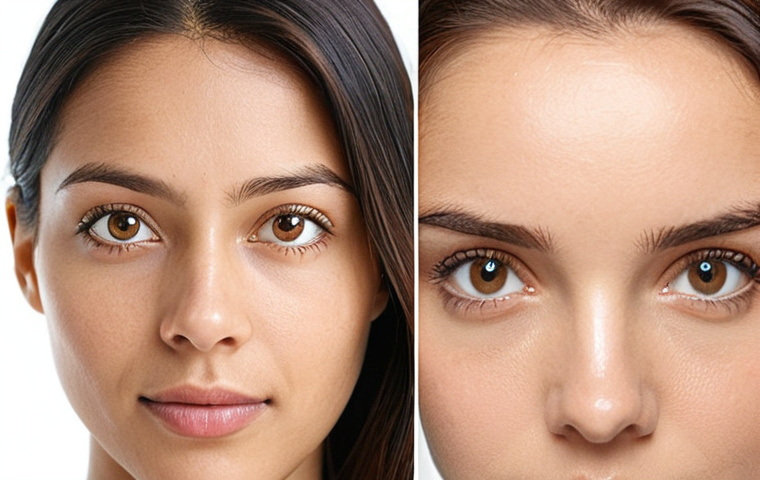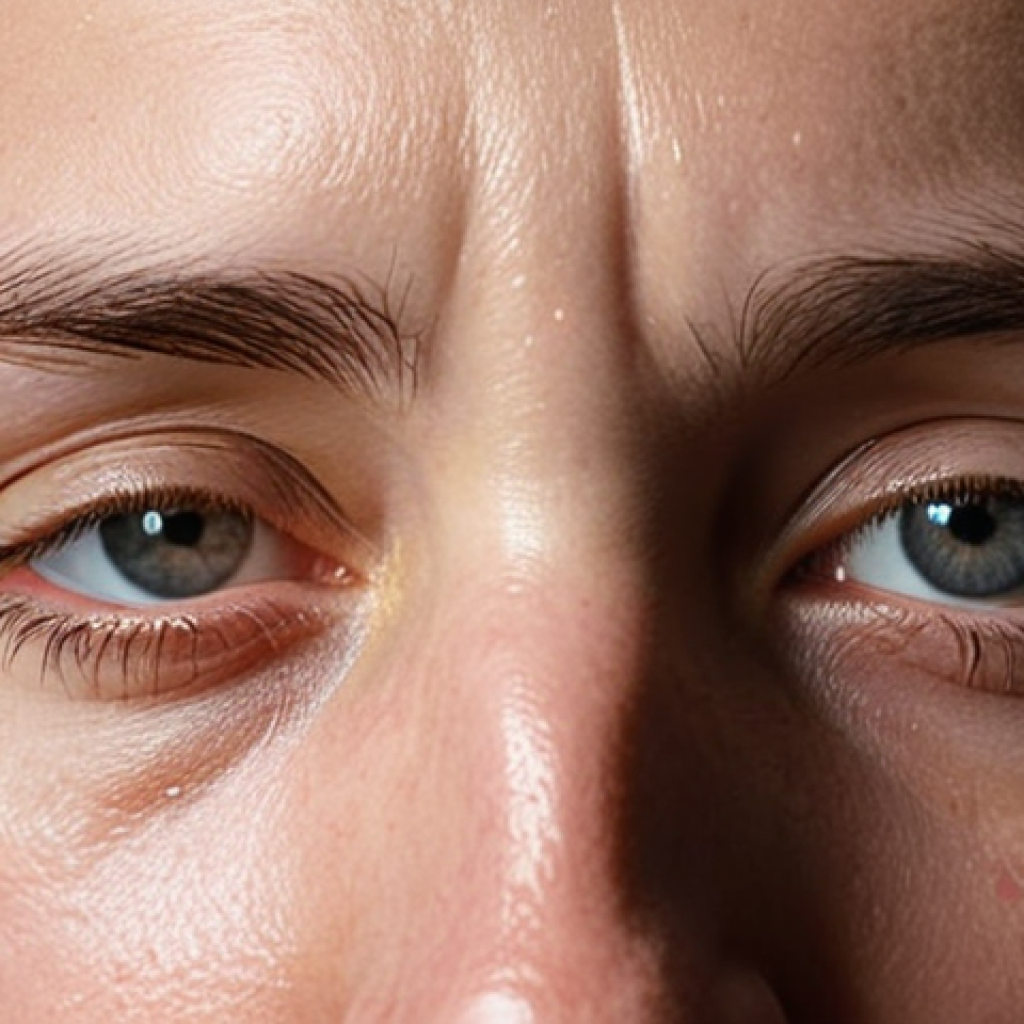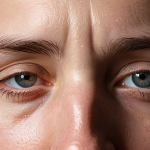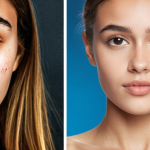I vividly remember standing in front of the mirror, the reflection showing an perpetually tired version of myself, eyes heavy with what felt like a constant weight.
It wasn’t just about looking sleepy; it genuinely impacted my peripheral vision and, honestly, my confidence. For months, I delved into the world of ptosis correction surgery, wading through countless articles, scrutinizing before-and-after photos, and having incredibly vulnerable conversations with friends and specialists.
What truly stood out in my research was the shift towards highly personalized, natural-looking results, a far cry from the “one-size-fits-all” approaches of the past, reflecting a broader trend in cosmetic procedures today.
If you’re wrestling with similar feelings or just curious about navigating this personal journey in an era where subtle enhancement and self-care are paramount, let’s find out precisely what the experience entails.
I vividly remember standing in front of the mirror, the reflection showing an perpetually tired version of myself, eyes heavy with what felt like a constant weight.
It wasn’t just about looking sleepy; it genuinely impacted my peripheral vision and, honestly, my confidence. For months, I delved into the world of ptosis correction surgery, wading through countless articles, scrutinizing before-and-after photos, and having incredibly vulnerable conversations with friends and specialists.
What truly stood out in my research was the shift towards highly personalized, natural-looking results, a far cry from the “one-size-fits-all” approaches of the past, reflecting a broader trend in cosmetic procedures today.
If you’re wrestling with similar feelings or just curious about navigating this personal journey in an era where subtle enhancement and self-care are paramount, let’s find out precisely what the experience entails.
Unpacking the “Why”: More Than Just Appearance

When I first started contemplating ptosis correction, it wasn’t a sudden impulse. It was a slow, creeping realization that the constant heaviness in my eyelids wasn’t just making me look fatigued; it was making me *feel* fatigued.
I’d catch glimpses of myself in shop windows, or see photos taken by friends, and my eyes would always appear half-closed, giving off an unintentional impression of disinterest or perpetual tiredness.
Beyond the purely aesthetic, there was a tangible impact on my day-to-day life. Reading felt more strenuous, especially under dim lighting, as I instinctively tried to lift my brows to open my field of vision.
Driving at night became slightly more challenging, and in conversations, I sometimes felt a subconscious need to over-animate my expressions just to ensure my eyes seemed open and engaged.
This wasn’t vanity; it was about reclaiming a sense of alertness and openness that felt fundamental to who I was. The decision wasn’t about conforming to some idealized beauty standard, but about aligning my outer appearance with my inner vitality.
The Subtle Erosion of Confidence
It’s easy to dismiss aesthetic concerns as superficial, but the truth is, how we perceive ourselves deeply impacts our confidence. For me, the drooping eyelids, though seemingly minor to others, became a focal point of self-consciousness.
I found myself avoiding direct eye contact, subconsciously tilting my head in photos, and even opting for larger sunglasses on bright days. This wasn’t just about looking tired; it was about feeling diminished, like a part of my expressiveness was being held captive.
The cumulative effect of these small, daily adjustments slowly chipped away at my self-esteem. I yearned to look in the mirror and see a reflection that truly captured my energy and attentiveness, not a perpetually weary version.
Beyond the Cosmetic: Functional Improvements
While aesthetics played a significant role, the functional aspects of ptosis were equally, if not more, compelling. I’d often experience a dull ache across my forehead by the end of the day, a direct result of my eyebrow muscles constantly working overtime to compensate for the drooping lids.
My peripheral vision felt subtly restricted, especially when looking upwards or to the sides, which was particularly noticeable when navigating busy environments or reading.
These aren’t issues you typically hear about in casual conversations, but for anyone experiencing them, they’re very real and impactful. The idea that a procedure could alleviate these physical strains, alongside the aesthetic benefits, made the prospect of surgery incredibly appealing and solidified my decision.
Navigating the Consultation Labyrinth: Finding Your Trusted Guide
The journey to finding the right surgeon felt akin to solving a complex puzzle. I knew I wasn’t looking for just anyone; I needed someone who not only possessed exceptional surgical skill but also shared my vision for natural, understated results.
This wasn’t a rushed decision. I scoured online forums, read countless patient testimonials – the good, the bad, and the ugly – and even reached out to a few acquaintances who had undergone similar procedures.
What struck me during this phase was the sheer variety of approaches and philosophies among surgeons. Some focused on dramatic transformations, while others, like the one I eventually chose, emphasized subtle refinements that enhanced one’s existing features.
My intuition told me to prioritize a surgeon who genuinely listened, who explained the nuances of the procedure in understandable terms, and who wasn’t afraid to manage my expectations honestly.
The Art of the Initial Meeting: Questions to Ask
My first few consultations were eye-opening. I walked in armed with a notebook full of questions, ranging from “What specific technique do you use for ptosis correction?” to “How do you ensure symmetry?” I found it incredibly insightful to ask about their aesthetic philosophy.
Do they lean towards a more dramatic lift or a subtle, natural enhancement? I paid close attention to how they answered, looking for clear explanations and a willingness to address my anxieties.
It was less about ticking boxes and more about feeling a genuine connection and trust. One surgeon, in particular, spent nearly an hour with me, meticulously explaining the different muscles involved, sketching out potential outcomes, and showing me a vast portfolio of before-and-after photos that resonated with my desired look.
That level of dedicated attention and transparency was precisely what I was seeking.
Red Flags and Green Lights: What to Look For
During this critical phase, certain signs became apparent. A major red flag was any surgeon who promised perfection or pressured me into making a quick decision.
Similarly, a lack of transparency regarding potential risks or recovery time was a huge deterrent. On the flip side, green lights shone brightly for those who emphasized a conservative approach, prioritized patient safety above all else, and had a proven track record of natural-looking results.
They also had to be board-certified, of course, but beyond that, it was about their artistic eye and their ability to communicate effectively. Ultimately, the surgeon I chose felt like a true partner in this journey, not just a technician.
Their office staff were equally warm and professional, which made a huge difference in my overall comfort level.
The Day Arrives: My Personal Experience in the Operating Room
The morning of the surgery was a strange mix of nervous excitement and quiet determination. I remember waking up earlier than usual, the house still quiet, and performing my usual morning routine with an added layer of calm focus.
I arrived at the surgical center, which felt more like a spa than a hospital, and was immediately greeted by friendly faces. The pre-op process was seamless: a final check of my vitals, a quick chat with the anesthesiologist who walked me through what to expect with the sedation, and then a comforting presence from the nursing staff.
Despite the clinical setting, there was a reassuring warmth that helped ease any last-minute jitters. My surgeon came in to mark my eyelids one last time, a precise, unhurried process, and we shared a brief, reassuring exchange.
As the sedative began to take effect, a wave of calm washed over me, and the last thing I remember was the soft hum of the machines and the gentle voices of the medical team.
The Procedure Itself: What I Felt (or Didn’t Feel)
Honestly, I don’t remember a thing about the actual surgery. This was by design, as I had opted for conscious sedation combined with local anesthesia.
There’s a certain comfort in knowing you’re awake enough for the surgeon to check your eye symmetry during the process (which is crucial for ptosis correction) but sedated enough to feel absolutely no pain or anxiety.
I woke up feeling a little groggy, like I’d just had a really deep nap, but remarkably clear-headed. There was no intense pain, just a mild pressure and a sensation of tightness around my eyes.
The first thing I did, instinctively, was try to open my eyes wide. And for the first time in years, it felt effortless. It was a subtle, yet profound, difference even through the initial swelling.
Immediate Post-Op: The First Glimpse
The very first moments after waking were surreal. My eyes felt a little sticky, and there was some blurriness from the ointment, but I could immediately tell a difference.
The nurses provided an ice pack, which felt incredibly soothing, and gave me clear instructions on medication and aftercare. I wasn’t allowed to drive, of course, so a friend picked me up, and the ride home was spent mostly with my eyes closed, continuing the ice compress.
The feeling of finally having taken this step, of having gone through with something I’d contemplated for so long, was a powerful mix of relief and anticipation.
It was a commitment to myself, and the journey had just truly begun.
Embracing the Healing Journey: The Unfiltered Recovery
The recovery phase, for me, was a rollercoaster of emotions and physical changes. It’s definitely not a walk in the park, but it’s entirely manageable with the right mindset and diligent aftercare.
The first 48-72 hours were the most intense, characterized by significant swelling and bruising. My eyes looked like they’d gone a few rounds in a boxing ring, with varying shades of purple, blue, and yellow.
Sleep was a bit challenging initially, as I had to sleep elevated to minimize swelling, but the prescribed pain medication kept any discomfort at bay.
The constant application of ice packs became my new ritual, and I found myself setting alarms throughout the day to ensure I was consistently icing. This period truly tested my patience, but seeing subtle improvements each day was incredibly motivating.
Navigating Swelling and Bruising
* Days 1-3: Peak swelling and bruising. My eyes felt tight, and my vision was slightly blurry due to the ointment and swelling. Ice packs were my best friend, applied religiously every 20 minutes.
I also made sure to keep my head elevated, even while sleeping, which really helped reduce fluid retention around my eyes. * Days 4-7: The swelling began to subside noticeably, and the bruising started to fade from angry purples to more muted yellows and greens.
I started venturing out for short, gentle walks, which my surgeon encouraged for circulation. * Weeks 2-4: Most of the obvious swelling was gone, and makeup could finally be applied to cover any lingering discoloration.
My eyes still felt a bit stiff, but the feeling of openness was becoming more pronounced. This was the point where I truly started to feel like myself again.
The Mental Aspect of Recovery
What surprised me most about recovery wasn’t the physical discomfort, but the mental game. There were days, particularly in the first week, when I looked in the mirror and felt a wave of “Is this it?
Is it worth it?” The swelling distorted my features, and it was hard to envision the final result. This is where patience and trust in the process became paramount.
I leaned heavily on the advice of my surgeon and their team, who reassured me that swelling was completely normal and that the true results would emerge gradually.
Connecting with others who had gone through similar experiences in online support groups also provided invaluable perspective and reassurance. It’s a marathon, not a sprint, and every small improvement felt like a victory.
Life After: Seeing the World Through New Eyes
Looking back now, months after the procedure, the difference is truly transformative, not just aesthetically, but in how I interact with the world. The constant heaviness is gone, replaced by a feeling of effortless openness.
People often comment that I look “rested” or “brighter,” without being able to pinpoint exactly why, which was precisely the subtle, natural result I had hoped for.
My peripheral vision has improved, and I no longer find myself straining my forehead muscles. This translates into less eye fatigue at the end of the day and a genuine feeling of being more alert and engaged.
It’s not about becoming a different person; it’s about becoming a more vibrant, authentic version of myself.
The Daily Impact: Small Changes, Big Difference
The daily impact of the surgery has been profound. When I wake up, my eyes feel light and open, instead of heavy and tired. Applying eye makeup, which used to be a struggle to avoid emphasizing the droop, is now a joyful process.
Photos no longer fill me with dread; instead, I see an accurate reflection of my energy. Even simple things like reading or watching a movie feel more comfortable.
It’s these small, consistent improvements that truly underscore the success of the procedure. It wasn’t a radical overhaul, but a thoughtful refinement that corrected a long-standing issue and allowed my eyes to finally mirror how I feel inside.
A Boost in Confidence and Well-being
The most significant impact has undoubtedly been on my confidence. I feel more comfortable making direct eye contact, and the previous self-consciousness about my eyes has completely dissipated.
This newfound ease has ripple effects, influencing my interactions in both personal and professional settings. It’s a quiet confidence that radiates outwards, making me feel more present and assertive.
Beyond the visual, there’s a sense of well-being that comes from addressing something that genuinely bothered me. It wasn’t about chasing perfection, but about achieving a sense of balance and harmony in my own appearance, which in turn fostered a deeper sense of self-acceptance.
Debunking Myths and Setting Realistic Expectations
Before diving into any cosmetic procedure, it’s crucial to separate fact from fiction. There are so many misconceptions swirling around ptosis correction, largely fueled by unrealistic social media portrayals or outdated information.
I spent a significant amount of time educating myself to ensure my expectations were grounded in reality, and I encourage anyone considering this journey to do the same.
This isn’t a magic wand that will completely alter your face or make you look 20 years younger; it’s a precise surgical procedure designed to lift the upper eyelid to a more natural and functional position.
Understanding the limitations, as well as the possibilities, is key to a satisfying outcome.
Common Misconceptions Addressed
Let’s talk about some of the myths I encountered during my research and experience:
* Myth 1: It’s just for cosmetic reasons. As I’ve shared, for many, it’s also about functional improvements like better vision and reduced eye strain.
While aesthetics are a factor, the underlying medical necessity for some cases cannot be overlooked. * Myth 2: Recovery is instant, and results are immediate.
Swelling and bruising are significant in the first week, and the true, final results can take several months to fully materialize as tissues settle. Patience is truly a virtue here.
* Myth 3: The results will look “surgical” or “fake.” This is a huge fear for many. With an experienced surgeon focused on natural results, the outcome should be subtle and harmonious with your overall facial features, making you look more rested, not “done.”
* Myth 4: It’s a permanent fix for all time.
While the results are long-lasting, the natural aging process continues. Factors like genetics, sun exposure, and lifestyle can influence the longevity of the results, though they typically endure for many years.
Setting Yourself Up for Success: A Realistic Outlook
The best way to ensure a positive experience is to have realistic expectations. This means understanding that:
1. Results are personal: What looks good on one person might not be the ideal for another.
Your surgeon should tailor the procedure to your unique anatomy. 2. Swelling is inevitable: You will be swollen and bruised, and it’s part of the process.
Don’t panic if your eyes look uneven or “off” in the first few weeks. 3. Patience is key: The final outcome emerges gradually.
Give your body time to heal and for the tissues to settle. Don’t judge the results too early. 4.
Communication with your surgeon is vital: Ask every question, no matter how small. A good surgeon will welcome your inquiries and provide clear answers.
Here’s a quick look at key considerations before you decide:
| Consideration | What to Expect | Personal Takeaway |
|---|---|---|
| Surgeon’s Expertise | Board-certified, specializing in oculoplastic surgery; strong portfolio of natural results. | Crucial for a personalized, subtle outcome. Don’t compromise. |
| Consultation Depth | Thorough discussion of goals, risks, recovery; realistic expectation setting. | Essential for building trust and understanding the entire process. |
| Recovery Period | Significant swelling/bruising 1-2 weeks; full results over several months. | Plan for downtime. Be patient and follow all aftercare instructions. |
| Cost & Insurance | Varies widely; sometimes covered if vision is impaired. | Investigate if functional impairment qualifies for insurance. Get a clear breakdown of all fees. |
| Emotional Readiness | Prepare for fluctuating emotions during recovery. | Lean on support systems. Focus on the long-term benefits, not just immediate post-op look. |
Is Ptosis Correction Right for You? A Personal Reflection
The decision to undergo ptosis correction surgery is deeply personal, and it’s certainly not for everyone. For me, it was a carefully considered choice that stemmed from years of internal deliberation and a growing desire to alleviate both aesthetic and functional concerns.
My experience has been overwhelmingly positive, leading to a significant improvement in both my physical comfort and my self-confidence. But what worked for me might not be the right path for someone else.
It requires a significant commitment—financially, physically during recovery, and emotionally. The most important advice I can offer is to conduct thorough research, seek multiple professional opinions, and truly listen to your own instincts.
This journey, at its core, is about self-care and making choices that empower you to feel your best.
Beyond the Surgery: What I’ve Learned
This entire process has taught me a profound lesson about prioritizing my own well-being. It wasn’t just about the surgery itself, but the journey of understanding my body, acknowledging my discomforts, and actively seeking solutions.
I learned the importance of patience, not just in waiting for results, but in navigating the emotional landscape of recovery. I also realized how powerful it is to advocate for myself, asking direct questions and finding a medical team that truly aligned with my values and goals.
This procedure, while targeted at my eyes, has actually opened my eyes to a deeper appreciation for personalized care and the subtle yet impactful ways we can enhance our quality of life.
Making Your Informed Decision
If you’re reading this, chances are you’re wrestling with similar feelings or are simply curious. My hope is that sharing my unfiltered experience provides you with a realistic glimpse into what the journey entails.
Remember, every individual’s anatomy and desired outcome are unique, making a personalized consultation with a qualified oculoplastic surgeon absolutely non-negotiable.
Discuss your concerns openly, ask every question that comes to mind, and trust your gut feeling about the medical team. This isn’t a decision to be taken lightly, but for me, it was one of the most empowering choices I’ve made for myself, allowing me to finally see the world, and myself, with newfound clarity and confidence.
Wrapping Up
As I close this chapter of my journey, I hope my candid account of ptosis correction surgery offers a clearer picture for anyone standing at a similar crossroads. This deeply personal decision, rooted in a desire for both aesthetic and functional improvement, has genuinely transformed my daily experience and boosted my confidence. Remember, the most empowering choice is an informed one, meticulously tailored to your unique needs and guided by trusted professionals.
My wish is that sharing my unfiltered experience helps you navigate your own path with greater clarity, ultimately empowering you to feel more vibrant and authentic every single day.
Useful Insights to Consider
1. Board Certification is Key: Always verify your surgeon’s credentials. In the US, look for board certification in Plastic Surgery or Oculoplastic Surgery from a recognized board. This signifies extensive training and adherence to high standards.
2. Comprehensive Consultations are Non-Negotiable: Don’t rush. Schedule multiple consultations to compare approaches, assess rapport with surgeons, and ensure they genuinely understand your desired outcome and manage expectations realistically.
3. Prioritize Natural Results: Discuss your aesthetic goals thoroughly. A skilled surgeon aims for subtle enhancement that complements your existing features, making you look refreshed, not “worked on.”
4. Prepare for Recovery: Swelling and bruising are normal and temporary. Plan for adequate downtime, follow all post-operative care instructions religiously, and be patient with the healing process.
5. Consider the Functional Aspect: If vision impairment or chronic eye strain is a factor, document this thoroughly as it might impact insurance coverage and the overall medical justification for the procedure.
Key Takeaways
Undergoing ptosis correction is a profoundly personal decision offering both aesthetic and functional benefits. Success hinges on selecting a highly skilled, board-certified surgeon who prioritizes natural-looking results. Embracing realistic expectations and patience throughout the recovery period are vital for a positive experience and ultimately, a significant boost in confidence and quality of life.
Frequently Asked Questions (FAQ) 📖
Q: You mentioned “wading through countless articles” and “incredibly vulnerable conversations.” How did you actually go about finding a surgeon you truly trusted for such a personal procedure?
A: Oh, that was probably the most nerve-wracking part, honestly. It wasn’t just about finding someone competent; it was about finding someone who got me and my vision for subtlety.
I started by looking for board-certified plastic surgeons or oculoplastic surgeons – that’s a non-negotiable for me, ensuring they’ve met stringent standards.
Then, I spent hours poring over their online portfolios, specifically looking for before-and-afters that resonated with the natural aesthetic I wanted, not just dramatic transformations.
I remember scheduling consultations with three different specialists in my area. Yes, they charged a consultation fee – usually around $100-$250 – but it was worth every penny.
It was during these face-to-face meetings that I really gauged their bedside manner, their willingness to listen, and their ability to explain the nuances without making me feel rushed or foolish.
One surgeon, in particular, spent a solid 45 minutes just looking at my eyes, asking about my lifestyle, my goals, even my skincare routine. He sketched out exactly what he envisioned, emphasizing preserving my natural eyelid crease.
It felt less like a sales pitch and more like a collaborative discussion about my face. That gut feeling, combined with solid credentials and consistent results in their gallery, sealed the deal for me.
Q: You highlighted the shift towards “highly personalized, natural-looking results.” What did that mean for your specific experience, and how did you ensure your outcome wasn’t overdone or unnatural?
A: That phrase – “natural-looking results” – became my mantra throughout this whole process. For me, it wasn’t about erasing years or changing my entire face; it was about restoring something I’d lost and just looking less perpetually tired.
I didn’t want wide, startled-looking eyes. I specifically told my surgeon, “I want to look like me, just on a really good day, well-rested.” We spent a lot of time during the consultation looking at photos of my own eyes from when I was younger, and he really paid attention to my existing anatomy.
He explained that a truly personalized approach means respecting your unique facial structure, like your brow position and the natural curvature of your eyelid.
He wasn’t aiming for a generic ‘perfect’ look, but rather an enhancement that would still feel authentically my eyes. I remember him saying, “The goal is for people to say, ‘You look great, did you get more sleep?’ not ‘What did you do?'” That resonated deeply.
It meant trusting his artistic eye to make subtle adjustments that would lift the lid just enough to reveal more of my iris, improve my field of vision, and crucially, maintain that softer, natural appearance.
It was about refinement, not reinvention.
Q: Beyond the visual improvement, did you experience any unexpected benefits or challenges during or after the process that you hadn’t anticipated from your initial research?
A: Oh, absolutely! The most profound unexpected benefit was the sheer boost in my overall confidence and just, well, comfort. Before, I didn’t realize how much I was subtly compensating – constantly raising my eyebrows, craning my neck to see peripheral things clearly, or just avoiding eye contact because I felt like my eyes looked so heavy and uninviting.
Post-surgery, the physical relief was immediate; my vision opened up, no more straining to see traffic lights or reading a book. But the emotional shift was truly something else.
I felt more present, more engaged in conversations, and genuinely happier with my reflection. I even found myself wearing less eye makeup because I didn’t feel the need to “open up” my eyes with cosmetics anymore.
On the flip side, the initial days of recovery were tougher emotionally than I’d anticipated. It wasn’t excruciating pain, more like a dull ache and a lot of bruising and swelling, which is completely normal.
Even though I knew it was temporary, looking in the mirror and seeing what looked like two black eyes was jarring. My surgeon had prepped me, saying “Expect to look like you went a few rounds with a boxer for the first week or so.” But experiencing it firsthand, despite the preparation, was still a little humbling.
My partner was a rock, reminding me daily it was part of the process. So, while the physical recovery was manageable, navigating that temporary “not quite myself” look required a bit more mental fortitude than I’d budgeted for.
But looking back now, it was a small price to pay for the incredible payoff.
📚 References
Wikipedia Encyclopedia
구글 검색 결과
구글 검색 결과
구글 검색 결과
구글 검색 결과
구글 검색 결과




